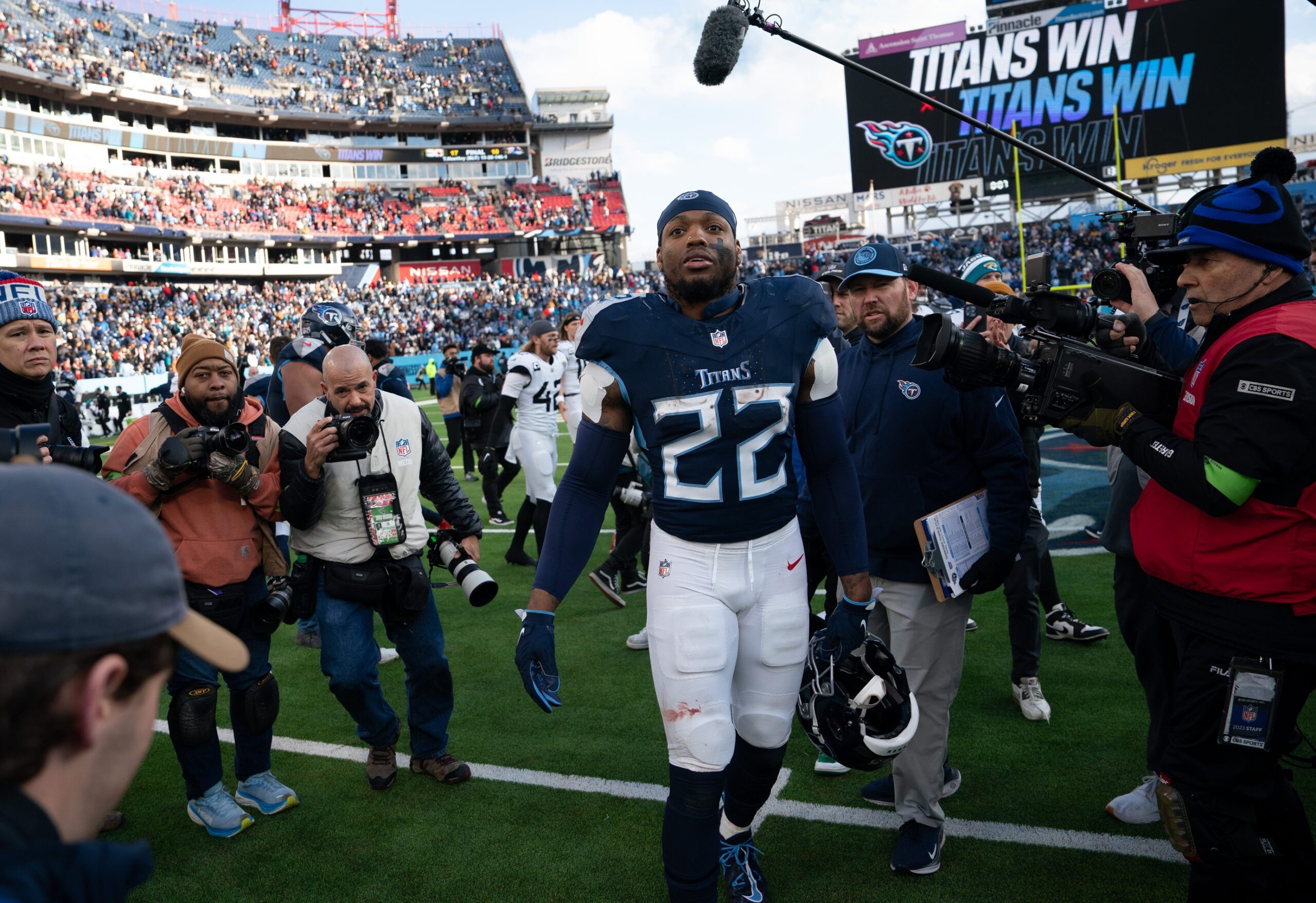The A.I. takeover is coming. Before long, fantasy football writers will be out of the job (wait a minute). Before Skynet and the Terminator are here, artificial intelligence is being used for projections models and business insights around the world. We asked ChatGPT what the most important stats are for fantasy football, and here’s what the A.I. had to say.
Watch – Related: How to Use A.I. To Dominate Your Fantasy Leagues
ChatGPT Was Asked Which Stats Are the Most Important for Projecting Fantasy Football Success
Projecting fantasy football success hinges on analyzing a variety of statistics that can indicate a player’s potential performance. The key to effective projections is understanding which stats are most relevant and how they translate to fantasy points. Here are some of the most important statistics to consider:
1. Yards (Rushing, Receiving, and Passing)
– Rushing Yards: For running backs, this is a primary indicator of value. A consistent number of rushing yards per game shows reliability and effectiveness in the ground game. Players who consistently average high rushing yards are typically focal points of their teams’ offenses.
– Receiving Yards: Wide receivers and tight ends are evaluated heavily on their receiving yards. Players with high yardage totals are generally more involved in their teams’ passing games, making them more valuable fantasy assets.
– Passing Yards: For quarterbacks, passing yards are a critical metric. High passing yardage not only correlates with frequent passing attempts but also with overall offensive productivity.
2. Touchdowns (Rushing, Receiving, and Passing)
Touchdowns are the most direct way to score fantasy points, regardless of the player’s position.
– Rushing Touchdowns: Running backs who find the end zone frequently are highly prized. Goal-line carries are particularly valuable, so understanding which players are used in these situations is essential.
– Receiving Touchdowns: Touchdown receptions are crucial for wide receivers and tight ends. Players who are targeted often in the red zone or possess a knack for scoring are especially valuable.
– Passing Touchdowns: For quarterbacks, passing touchdowns are a major source of points. Quarterbacks on high-scoring teams or those with elite receiving options tend to score more passing touchdowns.
3. Targets and Receptions
– Targets: The number of times a receiver is targeted indicates their involvement in the offense. High target counts usually translate to more opportunities for receptions, yards, and touchdowns.
– Receptions: Particularly important in PPR (Points Per Reception) leagues, receptions themselves are a direct source of points. Players with high reception totals are generally integral to their teams’ passing offenses.
4. Usage Rates
Usage rates help determine how often a player is involved in their team’s offensive plays.
– Touches for Running Backs: This includes both rushing attempts and receptions. A high number of touches suggests a running back is a focal point of the offense, increasing their potential for yards and touchdowns.
Read More: Dynasty Running Back Rankings
– Snap Counts and Snap Percentages: For all positions, the number of offensive snaps played and the percentage of team snaps taken are critical. Players who are on the field more often have more opportunities to accumulate fantasy points.
5. Efficiency Metrics
Efficiency metrics indicate how effectively a player uses their opportunities.
– Yards Per Carry (YPC): This stat shows how many yards a running back gains on average per rushing attempt. Higher YPC indicates greater efficiency and potential for big plays.
– Yards Per Reception (YPR): This indicates how many yards a receiver gains on average per catch. Higher YPR can signal big-play ability and a larger role in the offense.
– Yards Per Attempt (YPA): For quarterbacks, this shows the average yards gained per passing attempt. A higher YPA indicates an efficient and potentially explosive passing game.
6. Red Zone Usage
Players heavily involved in red zone plays have higher touchdown potential.
– Red Zone Targets: For receivers and tight ends, red zone targets are crucial for scoring opportunities.
– Red Zone Carries: For running backs, carries inside the 20-yard line often translate to touchdowns.
7. Team Context
Understanding a player’s team context is crucial for projections.
– Offensive Line Performance: A strong offensive line can significantly boost a running back’s and quarterback’s performance. Metrics like run-blocking grades and sack rates can provide insights.
– Offensive Scheme and Play Calling: Teams with high-paced offenses or those that favor passing can boost the fantasy value of their quarterbacks and receivers. Conversely, run-heavy teams might boost the value of their running backs.
Conclusion
Projecting fantasy football success involves a multifaceted analysis of various statistics, each providing insights into a player’s potential performance. By focusing on key metrics like yards, touchdowns, targets, receptions, usage rates, efficiency, red zone usage, and team context, fantasy managers can make informed decisions and maximize their chances of success. Combining these statistical insights with expert analysis from top fantasy football sites ensures a comprehensive approach to fantasy football strategy.
Human Analysis
The A.I. finished their fantasy football analysis last paragraph. Some of these stats are sticky year after year like targets (more importantly target percentage) but a lot of these stats vary heavily from year to year. It seems that A.I. isn’t quite there to give the golden apple of this year’s Puka Nacua in fantasy football, but this is at least a starting point to build on moving forward.
Main Photo Credit: Syndication: USA TODAY






